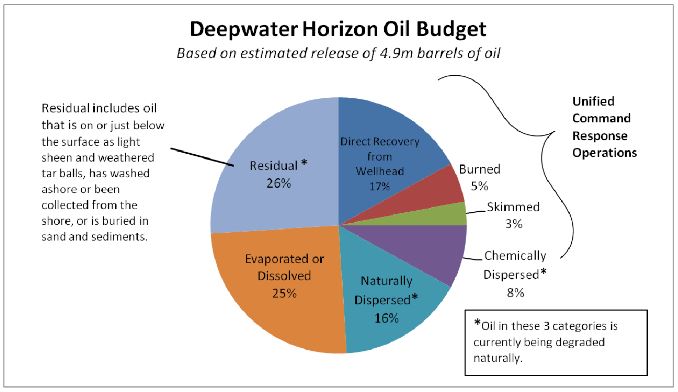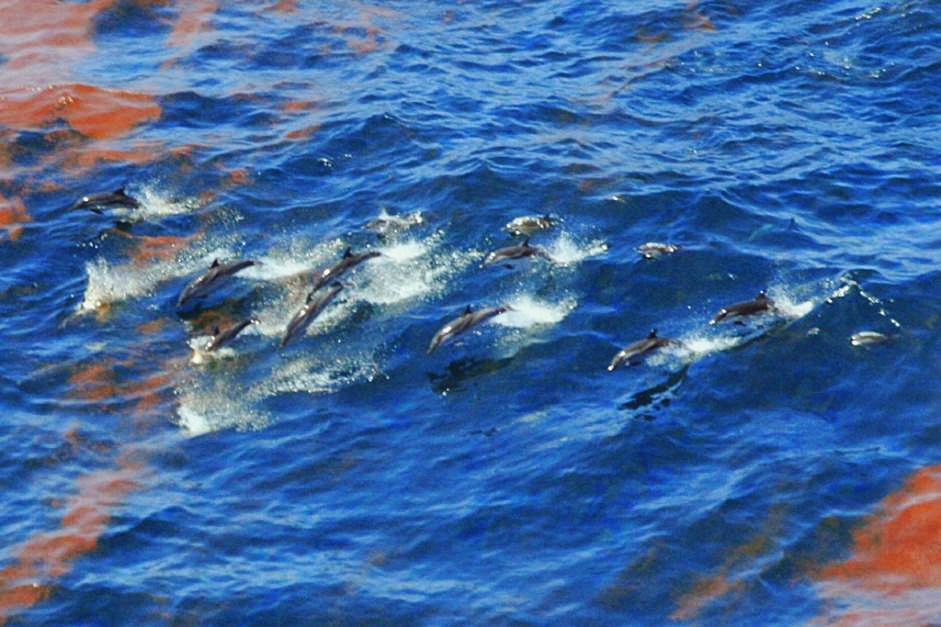
An Island Has Disappeared. The Food Web Is Slicked With Oil. Do YOU Care?
2015
– January 20th
After five years, as much as a quarter of the oil from the spill remains unaccounted for.
However, a study published in the journal of Environmental Science & Technology, using radiocarbon measurements, finds that an estimated six to ten million gallons of oil have settled into the sediment on the Gulf’s sea floor.
The reduced concentration at the sea floor makes it more difficult for bacteria to break the oil down, which will have longer-lasting reverberating effects across the Gulf’s entire food web.

– February 2nd
More than 1,000 scientists gather for the third-annual Gulf of Mexico Oil Spill & Ecosystem Science Conference.
Presenters conclude that residual petroleum continues to affect organisms on every ecosystemic level, Gulf storms have dispersed oil to previously unaffected habitats, and marsh shoreline erosion rates remain unusually high.
– March 31st
The National Wildlife Federation releases a study revealing the extent of the impact that oil exposure has had on Gulf wildlife:
- Dolphin deaths are four times higher than they were before the spill. Nearly 1,200 dolphins and whales have been found dead since 2010, leading scientists to declare an “Unusual Mortality Event” for cetaceans in the northern Gulf of Mexico.
- The annual number of Kemp’s ridley sea turtle nests have gone from a rapid increase before the spill to a steady decline after. Kemp’s ridley turtles are the most endangered sea turtles on the planet.
- Gulf fish have shown decreased reproductive rates and developmental abnormalities among a number of species.
- Twelve percent of the Gulf’s brown pelicans and thirty-two percent of its laughing gulls have died off. Populations of northern gannets, royal terns, and black skimmers have also suffered significant losses.

– April 15th
National Geographic releases a video report outlining how oil from the spill has caused Cat Island, one of the Gulf’s most prominent bird nesting grounds, to almost completely disappear.
Watch the report:
– April 20th (Five Year Anniversary)
News reports of the residual effects of the Deepwater Horizon/Macondo 252 spill continue to arise.
Temple and Penn State Universities release a study showing that the chemical used to disperse the spilled oil has been found to be more toxic to coral than the oil itself. Total chemical dispersant dumped into the Gulf post-spill: 1.85 million gallons.
So far, BP has spent $14 billion on cleanup for the Gulf, and $13 billion on claims from victims of the incident. It is clear however, that despite the billions they have spent trying to amend their negligence, the after-effects of this disastrous spill may never relent.
However, the 4.9 million barrels spilled in the Gulf of Mexico is only about 25% of the more than 19 million barrels consumed each day in the United States. And all that oil, once it is burned into the atmosphere, always eventually ends up in our waters too.
The only viable solution for fixing this disaster is to prevent the next massive oil disaster from ever happening. Let’s take a stand for the environment, and end our reliance on fossil fuels before it’s too late.